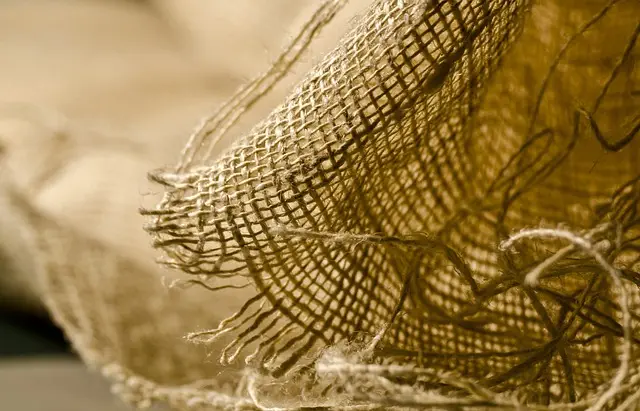Muscle soreness after intense physical activity is a common issue that involves inflammation and oxidative stress. Kratom, derived from Mitragyna speciosa leaves, shows potential for pain relief due to its active alkaloids like mitragynine and 7-hydroxymitragynine, which may interact with opioid receptors. When combined with fermented kanna extract from Sceletium tortuosum, the analgesic benefits may be enhanced, although scientific evidence is still emerging. Fermentation techniques have been shown to increase bioactive compounds in Kanna, potentially amplifying its mood-enhancing and pain-relieving properties. These benefits are attributed to heightened levels of pentatricopeptide repeat (PPR) proteins and interaction with the central nervous system, influencing serotonin and norepinephrine levels. While promising for muscle soreness management, it is essential to approach such supplementation with caution, considering dosage and side effects, and to consult with a healthcare professional before use. The combination of fermented Kanna with natural anti-inflammatory and analgesic remedies like ginger or turmeric may offer enhanced recovery benefits. Always prioritize personalized medical advice when exploring the therapeutic potential of kanna and its role in post-exercise recovery. Keywords: kanna fermented, muscle soreness relief, natural anti-inflammatory, healthcare professional consultation.
Muscle soreness can be a debilitating companion for many, whether from intense exercise, occupational demands, or personal injury. Seeking natural and effective relief options has become increasingly popular. This article delves into the potential of kratom, particularly fermented kanna, as a remedy for muscle soreness. We will unravel the mechanisms behind this phenomenon, explore the therapeutic properties of fermented kanna, and provide a guide to its safe and effective integration in your muscle soreness management routine. Join us as we navigate the intersection of traditional practices and modern wellness, harnessing the power of kratom’s active compounds for natural pain relief.
- Unraveling the Mechanisms of Muscle Soreness and Kratom's Role
- Exploring the Potential of Fermented Kanna for Muscle Soreness Relief
- A Guide to Safely Integrating Fermented Kanna into Your Muscle Soreness Management Routine
Unraveling the Mechanisms of Muscle Soreness and Kratom's Role

Muscle soreness, often experienced following intense physical activity or exercise, arises as a protective response to damage incurred during such exertion. The mechanisms underlying muscle soreness are multifaceted, involving inflammatory processes, oxidative stress, and the activation of various signaling pathways that lead to pain and tissue repair. Delving into the potential therapeutic properties of kratom, a plant-based substance derived from the leaves of Mitragyna speciosa, offers intriguing insights into its role in alleviating muscle soreness. Traditionally used in Southeast Asia for pain management, kratom contains alkaloids such as mitragynine and 7-hydroxymitragynine, which are believed to interact with opioid receptors in the brain, modulating pain perception. The fermentation process of kanna (Sceletium tortuosum) extract, when combined with kratom, may further enhance its analgesic effects, although research on this combination is still emerging. Preliminary studies suggest that kratom’s action on the opioid system could provide relief from muscle soreness, potentially aiding in recovery and improving overall well-being for those engaging in physical activities. As with any substance, careful consideration of dosage and potential side effects is essential, and it is advisable to consult healthcare professionals before incorporating kratom into a health regimen.
Exploring the Potential of Fermented Kanna for Muscle Soreness Relief

Kanna, scientifically known as Sceletium tortuosum, has a history of traditional use among indigenous Southern African communities for its mood-enhancing and analgesic properties. Recent interest in this plant has led to innovative fermentation processes, which enhance its bioactive compounds, potentially offering more pronounced effects. Fermented Kanna, particularly, may contribute to muscle soreness relief by modulating neurotransmitter activity and reducing inflammation. This fermentation method could heighten the levels of pentatricopeptide repeat (PPR) proteins, which play a role in the biosynthesis of these beneficial compounds. Users report a reduction in discomfort and an improvement in overall well-being when incorporating fermented Kanna into their regimen, suggesting its potential as a natural alternative for managing muscle soreness.
The efficacy of fermented Kanna is thought to stem from its ability to interact with the central nervous system, affecting serotonin and norepinephrine levels, which can influence pain perception and muscle relaxation. While further scientific research is needed to fully understand the mechanisms at play, preliminary findings are promising for those seeking natural ways to alleviate muscle soreness. Additionally, fermented Kanna’s potential for use in conjunction with traditional recovery practices like stretching, massage, or physical therapy, could provide a more holistic approach to managing post-exercise discomfort. Users should consult healthcare professionals before integrating fermented Kanna into their wellness routines, especially if they are taking other medications or have pre-existing health conditions.
A Guide to Safely Integrating Fermented Kanna into Your Muscle Soreness Management Routine

Kanna, scientifically known as Sceletium tortuosum, has a historical presence in South African culture for its mood-enhancing and pain-relieving properties. When fermented, this plant’s alkaloids transform, potentially amplifying its effects and offering an alternative to traditional muscle soreness remedies. To integrate fermented kanna into your routine for managing muscle soreness, it’s crucial to approach its use with caution and informed guidance. Begin by consulting with a healthcare provider to determine the appropriate dosage, as individual sensitivity to its effects can vary significantly. Start with a low dose to assess your body’s response; this gradual process allows you to gauge efficacy and comfort without overstepping into adverse effects.
As you become accustomed to fermented kanna’s influence on pain perception, you may notice its soothing action on the central nervous system, which can be particularly beneficial post-exercise. Consistency is key; maintain a consistent dosing schedule as recommended by your healthcare provider or a knowledgeable herbalist. It’s also advisable to combine kanna with other natural remedies known for their anti-inflammatory and analgesic properties, such as ginger or turmeric, to enhance its efficacy in alleviating muscle soreness. Remember to monitor your body’s response throughout this process, adjusting dosage and integration of other supplements as needed to ensure a safe and effective incorporation of fermented kanna into your health regimen.
Muscle soreness can be a significant impediment to an active and fulfilling lifestyle. The article has delved into the mechanisms behind muscle soreness, examined kratom’s role in alleviating this discomfort, and provided insights on the potential benefits of fermented kanna, particularly Kanna Fermentation Enhanced. By integrating kanna into a regimen as outlined in our guide, individuals may experience relief from muscle soreness. It’s clear that further research is warranted to fully understand kratom and kanna’s effects, but the initial findings are promising for those seeking natural alternatives for pain management. Users should consider these options with caution, adhering to recommended dosages and consulting healthcare professionals when necessary. With a growing body of evidence supporting the use of these botanicals, there is optimism for their role in the future of muscle soreness relief.






